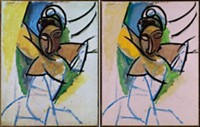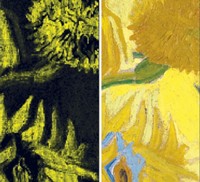Advertisement
Grab your lab coat. Let's get started
Welcome!
Welcome!
Create an account below to get 6 C&EN articles per month, receive newsletters and more - all free.
It seems this is your first time logging in online. Please enter the following information to continue.
As an ACS member you automatically get access to this site. All we need is few more details to create your reading experience.
Not you? Sign in with a different account.
Not you? Sign in with a different account.
ERROR 1
ERROR 1
ERROR 2
ERROR 2
ERROR 2
ERROR 2
ERROR 2
Password and Confirm password must match.
If you have an ACS member number, please enter it here so we can link this account to your membership. (optional)
ERROR 2
ACS values your privacy. By submitting your information, you are gaining access to C&EN and subscribing to our weekly newsletter. We use the information you provide to make your reading experience better, and we will never sell your data to third party members.
Analytical Chemistry
New Way To Analyze Art
Surface-enhanced Raman spectroscopy of artwork by Mary Cassatt
by Celia Henry Arnaud
August 10, 2009
| A version of this story appeared in
Volume 87, Issue 32

Raman spectroscopy is an increasingly popular method for analyzing pigments in artwork. Surface-enhanced Raman spectroscopy, which uses a metal such as silver to boost the Raman signal, improves the sensitivity of normal Raman and allows smaller samples to be used, but SERS has not previously been applied to artwork. Richard P. Van Duyne of Northwestern University, Francesca Casadio of the Art Institute of Chicago, and coworkers have now used SERS to analyze pigments in a variety of media, including six pastel sticks that belonged to the artist Mary Cassatt and a pastel artwork by Cassatt (Anal. Chem., DOI: 10.1021/ac901219m). They succeeded by coating single grains (1–6 μm) of pigment with silver colloids, instead of putting samples on a silver surface, as done previously. In "Sketch of Margaret Sloane, Looking Right," SERS revealed colorants in the ruff that couldn't be measured with normal Raman.





Join the conversation
Contact the reporter
Submit a Letter to the Editor for publication
Engage with us on Twitter